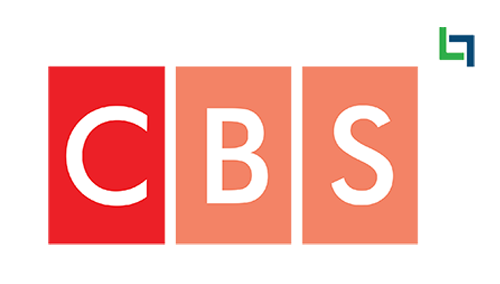Khóa luyện thi IELTS 1-1 5.5 – 6.0 tập trung vào 4 nhóm kĩ năng Nghe – Nói – Đọc – Viết giúp học viên đạt chuẩn đầu ra 6.0.
Lộ trình học rõ ràng luyện tập theo từng nhóm kỹ năng riêng biệt dưới sự hướng dẫn của đội ngũ giảng viên 8.0+ IELTS giúp bạn tự tin và được truyền cảm hứng học tập chăm chỉ mỗi ngày.
AI CÓ THỂ THAM GIA KHÓA HỌC NÀY?

- Học sinh, sinh viên cần nộp chứng chỉ IELTS tại trường hoặc để miễn một số kì thi phù hợp với mục tiêu của mình.
- Đối tượng có ý định du học, định cư, sinh sống và làm việc ở các quốc gia nói tiếng Anh.
- Người đi làm có nhu cầu tăng lương, thăng tiến hoặc chuyển đổi công việc hấp dẫn hơn.
BẠN ĐƯỢC GÌ SAU KHÓA HỌC?

- Cam kết đầu ra.
- Có kiến thức về cấu trúc và cách tiếp cận bài thi IELTS hiệu quả.
- Phát triển tư duy học tập đúng đắn, loại bỏ việc đọc, viết và nói dựa trên dịch thuật.
- Diễn đạt và viết một đoạn văn hoặc bài luận một cách nhanh chóng, trôi chảy, tự nhiên và mạch lạc, ngay cả khi gặp những chủ đề không quen thuộc.
- Hiểu nhanh chóng và chính xác toàn bộ nội dung của một chủ đề khó và xa lạ, ngay cả với vốn từ vựng hạn chế.
- Hỗ trợ làm Mock Test mỗi tuần để theo sát quá trình học và điều chỉnh giáo án dạy học phù hợp (nếu cần).
NỘI DUNG KHÓA HỌC
Khóa luyện thi IELTS 5.5 – 6.0 giúp học viên tập trung ôn tập 4 kỹ năng quan trọng của bài thi IELTS bao gồm 27 bài học trong chương trình:
Lesson 1: Reading:
The problem in the current reading of students: translation reading/skimming and scanning.
Reading strategies
Apply to Academic reading passages
Practice applying the method of preview reading before the actual reading
Lesson 2: Writing:
Overview of Writing Sentence Structures
How to learn sentence structures correctly
How to write the correct sentence
Practice: Steps to Write a Correct, Simple Sentence.
Review how to look up words, and sentence structures, and how to write correct sentences.
Lesson 3: Speaking:
How to use statements to start an answer.
Practice + Listening 1
Topic: Work and Study / Accommodation
Lesson 4: Reading:
How to read sentence structures
Common simple and complex sentence structures frequently encountered in reading passages
Applying the analysis of sentence structures in a specific reading passage
Lesson 5: Writing:
How to improve a sentence and connect two sentences
How to connect two sentences: with and without linking words
Introducing the Collocation exercise format and applying practice to connect two sentences
Lesson 6: Speaking:
How to answer Part 1 questions
Practice topics:
Listening: Map
Lesson 7: Reading:
How to answer Gapfill questions
Common challenges students often face in Gapfill exercises
How to identify the type of word to fill in the gap
How to recognize paraphrasing
Apply it to a specific reading passage
Lesson 8: Writing:
Overview of Writing Task 2
Identifying common issues in Writing Task 2
Lesson 9: Speaking:
How to use connectives to link sentences
How to answer Part 2 Question
Practice test
Lesson 10: Reading:
How to answer True/False/Not Given questions
Lesson 11: Writing:
Approaching the Problems Causes Solutions format
Lesson 12: Speaking:
Introduce Part 3 + How to paraphrase in Speaking
Lesson 13: Reading:
Effective ways to learn vocabulary
Lesson 14: Writing:
How to answer Agree/Disagree questions.
Lesson 15: Speaking:
Paraphrase in Part 3
Idea development (Part 3)
Lesson 16: Reading:
Reading connections and how to approach Matching Headings questions.
Lesson 17: Writing:
Various ways to paraphrase and provide examples
Lesson 18: Speaking:
Practice (Part 3)
Lesson 19: Reading:
How to approach Multiple Choice and Matching Names questions
Lesson 20: Writing:
Writing Task 1 – structures
Lesson 21: Speaking:
How to answer three small questions in Part 2
Lesson 22: Reading:
How to approach Matching Endings and Matching Information questions
Lesson 23: Writing:
Describing data in Writing Task 1 and the structure of making comparisons in Writing Task 1
Lesson 24: Speaking:
How to answer ‘Why’ questions in Part 2.
Lesson 25: Writing:
Describing trends
How to write a complete Task 1 essay.
Lesson 26: TEST Practice:
Guided Test Practice 1 – Data about People
Pie Charts, Stacked Bar charts and Future predictions
Frequency and Grouping information logically
Lesson 27: Revision and Mock test
Lesson 28: Final test:
Correction








